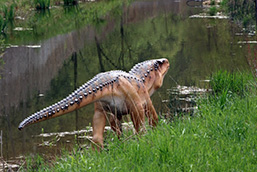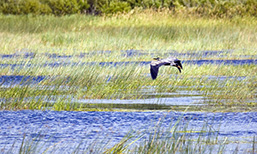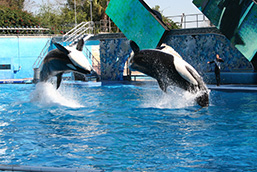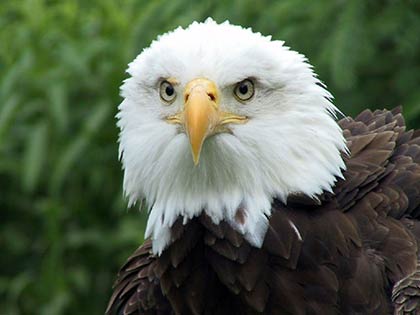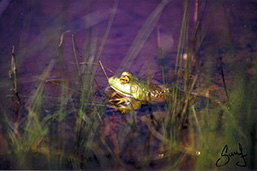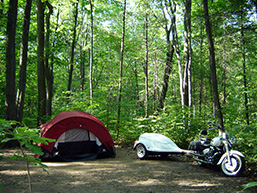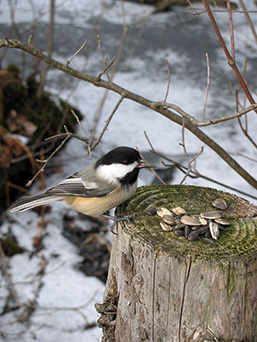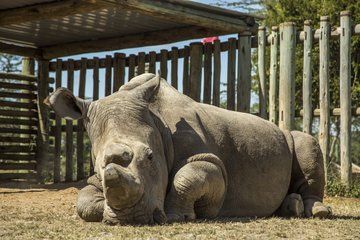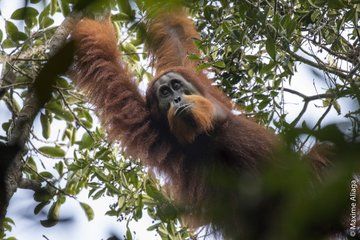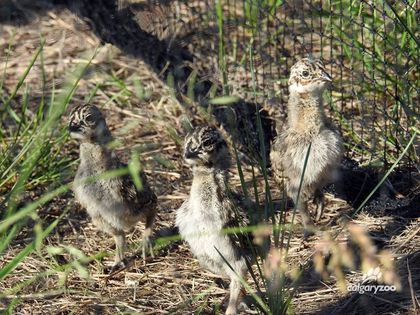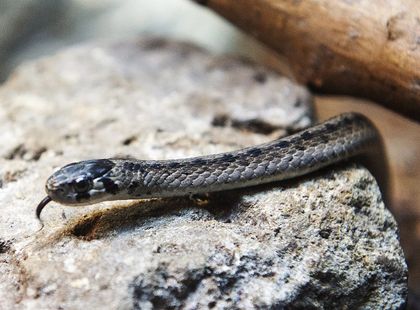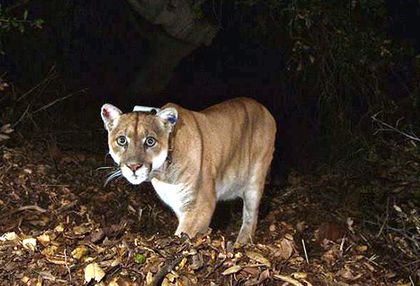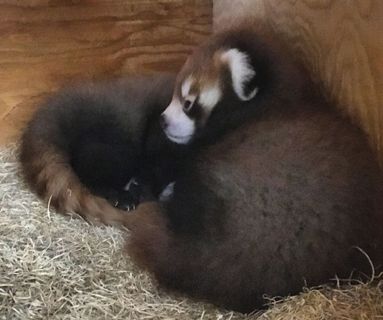Why protect
Endangered Species... So What?
We know that animal species have appeared and disappeared continually since life began on Earth. This is a natural phenomenon. However, species have been vanishing at a much faster rate for about a century now thanks to human factors such as pollution, commercial overexploitation, poaching and deforestation. Well, so what? Is it really that important to protect every species of animal on our planet?
Certain philosophers and scientists keep repeating that if we don't save the animals, how will we be able to save ourselves? A better knowledge and understanding of animals gives us a better understanding of our own species. The will to protect animals and nature in general demonstrates the value of a society. And if the optimal development of our resources is a priority, it must be achieved not only economically or socially, but environmentally as well. This is the vision of sustainable development, which dictates that we use our natural resources wisely for the benefit and enjoyment of future generations.
But again, why the strenuous attempts to protect snakes, crocodiles, sharks, spiders, or even wolves and raptors? Because it doesn't matter that an animal is ugly to look at, undesirable or potentially dangerous, all animals play a role in nature and have a right to survive. It's surprising to learn the services they render us in return.
A Question of Balance
In nature, everything is interconnected. Unfortunately, we often have very little idea of all the repercussions involved in the disappearance of a single animal population in a corner of a forest, swamp or river. Imagine the impacts of clear cutting on the development of a new residential area or those of filling a swamp in order to build a road. Imagine that pollutants are emptied into the mouth of a river. What would happen? Obviously, the shrubs, trees, aquatic plants and algae would be contaminated, die or disappear. Browsing animals would then be obliged to leave the area owing to the lack of food sources. Next, predators large and small would be deprived of the prey they need to survive. And so on and so forth. Disruption and imbalance are the hallmarks of a nature modified and remodelled by humans. And since every animal plays a specific role in the food chain and the balance of nature, the entire natural world would be turned on its head. To illustrate each one's role in the environment, let's make an analogy with the Egyptian pyramid. Each animal species is represented by a stone block. If one block is removed from the base, nothing happens. The pyramid remains solid enough thanks to all the other blocks. But if several blocks are removed at random, the edifice becomes fragile. At some point the removal of a single block becomes too much and the entire structure crumbles. The same holds true for the pyramid of life. All species are necessary to maintain this fragile equilibrium in nature, even if their role is not immediately obvious.
The following is a good illustration of the bonds linking animal species. Strange as it may seem, the Killer Whale affects the diet of the Bald Eagle in Alaska! Researchers have found that an increase in Killer Whales results in a decrease in Sea Otters, one of their favourite prey items. Otters, for their part, eat sea urchins. Therefore, the fewer otters, the more sea urchins there are. Sea urchins feed on the large algae that serve as hiding places for fish and invertebrates along banks. Thus, the more sea urchins, the fewer algae and...the fewer hiding places! As a result, the fish move elsewhere. In Alaska, Bald Eagles are raptors who subsist mainly on the fish in shallow waters on the edges of the ocean. Without these fish, they have to find other food. Accordingly, scientists discovered that the decline of Sea Otters in Alaska thanks to the predation of Killer Whales, forces Bald Eagles to change their diet and choose marine birds as prey. A puzzle indeed!
Nature, Source of Life
Man has produced a thousand and one inventions while observing nature. Think of Leonardo da Vinci, who drew flying machines as he watched the flight of bats. In the area of human health, animals and plants often show us the way to stay in shape. Take, for example, Chimpanzees, who consume various plants to treat health disorders (digestive problems, bouts of malaria, parasites...). They have learned to consume the right plants in the right doses for the right ailments! Is it possible we'll discover new medicines thanks to Chimpanzees?This is what the veterinarian Sabrina Krief affirms since studying the behaviour of these primates in Uganda. It is, therefore, to humans' advantage to save this monkey and the some 190 species of primates that populate the tropical forests of Asia, Africa and South America.
Nature can be viewed as a huge pharmacy; it contains thousands of components essential to man's survival. Therefore, the animal world is in a way part of our survival kit. Used since the nineteenth century, leeches are now employed in surgery because of the anticoagulant and anti-inflammatory properties of their saliva. The active elements of the Brazilian Viper's venom have been synthesized into a medication that controls blood pressure. Scorpion venom is used in research on brain tumours. Sharks contribute to studies of muscle degeneration and certain forms of cancer. Bee honey improves human health by targeting and attacking certain microbes in our organism. One of only two poisonous lizards on earth, the Gila Monster secretes a substance in its venom that may help treat diabetes. Finally, the study of a species of African frog, Xenopus laevis, was found to produce a molecule useful in preventing infections from body lesions. Scientists focus on these frogs in their research on the AIDS virus (acquired immunodeficiency syndrome). Imagine the potential of the 5,500 frog species which, for the most part, don't all produce the same molecule! We could find a host of remedies for all kinds of aches and pains. Unfortunately, amphibians are declining rapidly thanks to pollution, habitat destruction and climate change. In 2008, scientists declared that more than a third of the planet's amphibians were seriously at risk.
Plants also play a crucial role in our health. Of the 150 medicines most frequently prescribed, about a hundred are derived from plants. Happily, many of the active ingredients in these plants can be synthesized in the laboratory. This is the case for aspirin, which comes from the willow tree. On the other hand, it's impossible to synthesize the anti-cancer molecules in the Ground Hemlock. This shrub must be harvested in order to extract its benefits. Certain specialized companies have received a mandate to do this.
An Important Economic Engine for Canada
Did you know that over 85% of Canadians believe in the importance of nature and are in favour of protecting endangered species? Economically, this represents more than 20 million Canadians who spend billions of dollars a year to practice "nature" activities such as mountain hiking, camping, fishing, hunting, photography, bird watching and visits to zoos or nature centres. What's more, thousands of Canadians earn their living from flora and fauna. There's also the tourism industry, which attracts many travellers to Canada thanks to the beauty of its forests, the splendour of its mountains and the majesty of its lakes and rivers. Let's keep our eyes on OUR nature and safeguard these precious jewels.
Then again, why not protect animals simply because they're BEAUTIFUL? A butterfly that delicately alights on a flower; a chickadee that pecks at the seeds in your birdfeeder; frogs that sing during mating season in springtime; a Moose that emerges from the mist close to your campsite... Even animal species not at risk need your support. If humans don't take action to keep our planet "green and blue", hundreds of species will be gone 50 years from now, while those currently abundant will merit the status of endangered species in 2050 – an unenviable fate. As inhabitants of the Earth, we must take measures to reverse this trend, for we are the ones responsible for the ecological disorder. Over the next decades, therefore, we must step up efforts to ensure that our grandchildren, like ourselves, will have the opportunity to enjoy nature in all its glory.

